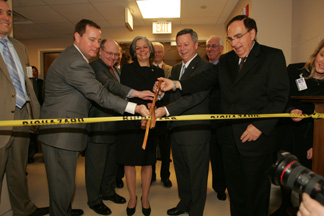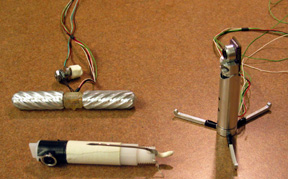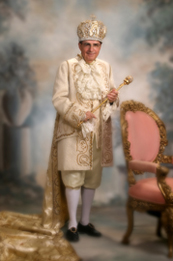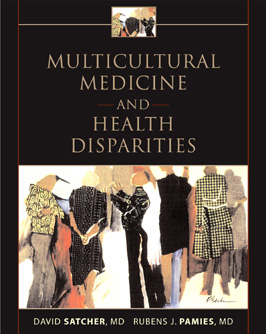The accomplishments of the past year — from designing the world’s tiniest surgical robots to opening the country’s largest biocontainment unit — are impressive. But, it’s the day-to-day work – teaching students in the classroom, advancing science in the laboratory and healing patients in the clinic – that makes UNMC truly remarkable.
Many of those stories go untold. Yet, each has a profound impact on the medical center and how it is viewed locally, regionally and nationally.
As we begin another year of educational, research and clinical accomplishments, we pause to remember some of the stories that made headlines in 2005 and a few of the many individuals who have helped make UNMC a premier health science center.
 UNMC stood in the national spotlight in March when Julie Gerberding, M.D., director of the Centers for Disease Control and Prevention, visited to help unveil Nebraska’s new Biocontainment Unit at The Nebraska Medical Center. The 10-bed unit is the largest in the country.
UNMC stood in the national spotlight in March when Julie Gerberding, M.D., director of the Centers for Disease Control and Prevention, visited to help unveil Nebraska’s new Biocontainment Unit at The Nebraska Medical Center. The 10-bed unit is the largest in the country.
Already a leader in the study of adult stem cells, UNMC entered the embryonic stem cell research arena last year when two research teams received training on stem cell lines approved by President George W. Bush. Drs. Ira Fox and Stephen Rennard will use the cells to try to regenerate damaged liver cells and form new lung tissue.
UNMC researchers discovered a previously unknown organism and named it nebraskense, after the state. The discovery allows laboratory specialists around the world to identify the organism faster and earlier, enabling health professionals to use the most appropriate treatment. The organism is known to cause chronic lung infection, including pneumonia.
In July, UNMC received one of the largest research grants in its history — a nearly $9 million, five-year grant from the National Cancer Institute to better diagnose lymphomas through microarray technology. The technology helps researchers profile or “decode” genes to find what is causing the cancer.
In September, UNMC landed a $1.9 million grant to create Area Health Education Centers (AHECs) in Omaha and southeastern Nebraska and to continue funding the three existing AHECs based in Grand Island, Norfolk and Scottsbluff.
UNMC researchers also landed two separate $1.5 million grants from the National Institutes of Health and the U.S. Department of Health and Human Services to respectively develop a Pancreatic Cancer Collaborative Registry and continue research into the regulation of aortic aneurysms.
 UNMC and University of Nebraska-Lincoln engineers collaborated to develop a new surgical grasping tool, trademarked under the name Intuitool, for minimally invasive surgery. Months later, the groups introduced a family of miniature robots capable of being slipped into a patient’s abdomen and controlled by a surgeon hundreds of miles away. The miniature robots – the width of a lipstick case – made international headlines, including a CNN appearance.
UNMC and University of Nebraska-Lincoln engineers collaborated to develop a new surgical grasping tool, trademarked under the name Intuitool, for minimally invasive surgery. Months later, the groups introduced a family of miniature robots capable of being slipped into a patient’s abdomen and controlled by a surgeon hundreds of miles away. The miniature robots – the width of a lipstick case – made international headlines, including a CNN appearance.
The medical center became the first and only nationally certified stroke center in Nebraska and the Epilepsy Center achieved national designation as a level four regional center for the treatment of epilepsy — the highest designation possible.
In late September, Mark Maeder of Papillion received a life-saving heart transplant – the first at The Nebraska Medical Center since 1999.
This past summer, UNMC hosted six undergraduates – the first to participate in the unique Virginia-Nebraska Alliance, an academic and research partnership between UNMC, Virginia Commonwealth University, six Historically Black Colleges and Universities and a leading Virginia community college.
The 2005 Cattlemen’s Ball raised $600,000 for the UNMC Eppley Cancer Center, shattering previous fund-raising records.
This past fall, the UNMC College of Nursing Lincoln Division moved to a new temporary location in downtown Lincoln and the UNMC College of Nursing opened an alumni history museum on the Omaha campus.
UNMC researchers conducted a unique vaccine trial for breast cancer patients with non-metastatic disease. The vaccine, developed by Drs. Ken Cowan and James Talmadge, is made from the patient’s own dendritic cells and may be an effective way to induce an immune response to fight breast cancer.
UNMC announced a unique statewide effort to identify potential lung cancer — the deadliest cancer in America — early through CT scans provided by participating hospitals across the state.
 UNMC Chancellor Harold M. Maurer, M.D., was crowned the 109th King of Ak-Sar-Ben for his role in propelling UNMC into a world-class academic health science center.
UNMC Chancellor Harold M. Maurer, M.D., was crowned the 109th King of Ak-Sar-Ben for his role in propelling UNMC into a world-class academic health science center.
In May, the Cancer Cell cover story spotlighted a UNMC study that sheds light on a mechanism involved in the pathological destruction of bone caused by metastatic prostate cancer. The study provides critical insight into the process of prostate cancer-driven bone destruction and identifies a treatment that may interrupt bone disease caused by the spread of prostate cancer.
The Hixson-Lied Center for Clinical Excellence, which connects University and Clarkson Towers, opened its doors after breaking ground in November 2002. Nearby, 12 buildings, including the Computing Services Building on the northeast corner of 42nd and Emile street, were razed in preparation for a new $52.7 million education building.
This past fall, UNMC researchers helped identify the location of a gene on the human genome that is responsible for Dupuytren’s contracture, the most common inherited connective tissue disease.
UNMC’s student enrollment topped 3,000 this fall and UNMC’s Mini-Medical School celebrated its 10th year.
 Two leaders in minority medicine – Rubens Pamies, M.D., vice chancellor for academic affairs and dean of graduate studies at UNMC, and David Satcher, M.D., Ph.D., interim president of the Morehouse School of Medicine and former U.S. Surgeon General – co-edited the first textbook to take a comprehensive look at health care disparities. “Multicultural Medicine and Health Disparities,” published by the McGraw-Hill Publishing Company, assists health care students and practitioners in delivering skilled and appropriate care to all patients, no matter their ethnicity, country of origin, cultural history or access to services.
Two leaders in minority medicine – Rubens Pamies, M.D., vice chancellor for academic affairs and dean of graduate studies at UNMC, and David Satcher, M.D., Ph.D., interim president of the Morehouse School of Medicine and former U.S. Surgeon General – co-edited the first textbook to take a comprehensive look at health care disparities. “Multicultural Medicine and Health Disparities,” published by the McGraw-Hill Publishing Company, assists health care students and practitioners in delivering skilled and appropriate care to all patients, no matter their ethnicity, country of origin, cultural history or access to services.
UNMC researchers also were instrumental in developing a new gene chip that will greatly enhance the ability of scientists to develop new vaccines for AIDS, the Avian flu and for possible bioterrorism agents. The GeneChip will allow scientists to more efficiently study the genes of the rhesus macaque monkey, the most commonly used monkey in biomedical research.
This past fall, UNMC welcomed the first exchange personnel from Shanghai Jiaotong University Medical School – a collaborative research and education initiative. The students are the first Chinese medical students to do clinical rotations in the United States and then graduate from a major Chinese medical school under an eight-year American-style training curriculum.
UNMC was one of 20 sites chosen to participate in a national clinical trial to study a medication’s effect on pathological gambling.
2005 also marked the loss of individuals who left lasting legacies at UNMC. Among them:
- LeeRoy Meyer, M.D., internal medicine professor, died Feb. 13.
- Jane Harris, Human Resources, died March 17.
- James Neff, M.D., orthopaedic surgeon, died July 12.
- Larry Reinig, facilities management and planning, died Oct. 2.
- Lyal Leibrock, M.D., professor of surgery and former longtime chief of the section of neurosurgery at UNMC, died Nov. 13.
- Harlan Noddle, longtime supporter of UNMC and board member of The Nebraska Medical Center, died Dec. 11.